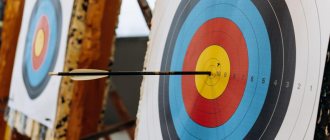Many people have a stereotype that the goal of any psychologist is to reveal the insides of the soul, get to the bottom of problems, find out the root causes of suffering that goes back to childhood, and work with them. In fact, this is far from the case. For example, one of the directions - behaviorism - studies primarily behavior. In their opinion, the most important things are reflexes, acquired skills, reactions to external stimuli and motivation. This is what determines the essence of a person’s mental organization. Based on this concept, behavioral psychotherapy was created and successfully applied in practice.
Basics of Behavioral Psychology
Behavioral psychology was born in the United States and dominated other fields of psychology in the first half of the 20th century.
J.B. Watson is considered the founder of behavioral psychology. In his report published in 1913, he writes that from the point of view of behaviorism, psychology is an objective experimental branch of the natural sciences, and the goal of behaviorism is to predict and control human behavior.
Behavioral psychology
“Knowing how to achieve control through incentives, without resorting to yelling and coercion, makes life easier for everyone, educator and learner alike.”
Karen Pryor
Introspective psychology, which is considered biased, is rejected by behaviorism. Behavioral psychologists believe that objective conclusions can only be drawn by studying observable facts (behavior) that can be measured and quantified.
Purpose of Behavioral Psychology
The Behavioral Manifesto, published by J. B. Watson in 1913, marked a turning point in psychology. Behaviorism became its main direction due to its pragmatism.
The idea of behavioral psychology is to guide and change people's behavior so that they can transform their lives. To implement this ambitious project, you need to know the laws of behavior, predict and control it.
That is, in order to be able to influence the result, you need to know what causes it.
Regular classes1
Goals, fears and desires. Training course3 hoursKievWebinar “Working with a patient with a personality disorder using cognitive-behavioral psychotherapy techniques”...3 daysProgram “Working with a patient with a psychosomatic illness using cognitive-behavioral techniques...3 daysProgram “Cognitive-behavioral therapy techniques in family counseling”. There is a possibility of participation...3 days
| Cognitive-behavioral psychotherapy in working with a patient with a personality disorder and psychosomatic...4 months, 144 academic days. hours |
Behavioral psychotherapy
: subscribe to news from this area. Events in other regions 8
Behaviorism and animal experimentation
To implement this concept and apply it to the study of human behavior, behavioral psychology uses a method first tested on animals.
E. L. Thorndike made enormous contributions to the study of animal behavior. His works still play a big role, including in the psychology of human behavior.
Thorndike discovered two main phenomena:
- Animals learn only by trial and error;
- During the course of research, a gradual reduction in unwanted behavior occurs in all animal species. Thorndike produced the same training schedule every time, regardless of which animal was studied.
Later, based on these studies, Watson came to the conclusion that using methods of studying animal psychology, it is possible to create laws that predict and control human behavior.
But the goal of behavioral psychology is not only to control behavior, but also to “create” it.
Pavlov's research
The most prominent studies on the formation of new behavior were and remain the works of I.P. Pavlov's dog conditioning.
Since 1914, Watson (the founder of behaviorism) began to be interested in the works of I.P. Pavlov on conditioning canine reflexes. Indeed, during his work, Pavlov established a whole set of laws about conditioning.
Conditioning is a form of relationship between a stimulus and a reflex (behavior).
It was Pavlov who discovered this phenomenon. In his research, he noticed that the smell of food, the sight of food, or even the sight of the person who usually brought the food was enough to cause dogs to salivate.
Pavlov called this phenomenon a conditioned reflex (or conditioned response), that is, a reflex that depends on environmental conditions.
Treatment
Despite the variety of methods, treatment in behavioral psychotherapy is carried out primarily according to one scheme:
Behavioral therapy is often used for children who are struggling in school. For example, the shaping method for speech therapy correction, when the main task is divided into a small chain of correct behavioral acts:
Repeat the syllable after the teacher → Read it correctly yourself → Read the whole word correctly → Read an unfamiliar word correctly → Read the whole phrase correctly
At each stage, a method of systematic desensitization is used.
Behavioral therapy is incredibly effective for autistic people. She breaks down all the skills that are difficult for them into separate blocks: speech, contact, play, listening and looking into the eyes. Each of these actions is mastered gradually.
An example of one of the very first exercises in behavioral psychotherapy for autism, “Language - Understanding”:
- Assignment: Raise your hand when asked.
- Hint: the specialist himself takes the child by the hand and raises it, pronouncing the task.
- Stimulus: encouragement in the form of praise or sweets.
- Independent completion of the task.
Autistic children perform this exercise only 5 or even 10 times.
Human conditioning
After studying Pavlov's work, J. B. Watson concluded that studies of animal conditioning provided the key to the study of human behavior.
Watson's idea, as well as all behavioral psychology, is that conditioned reflexes are the basis of human behavior in all life situations.
Examples of human conditioning
To confirm his hypothesis, Watson, together with R. Rayner, conducted one of the most unethical experiments in the history of psychology in 1920 (details here). Researchers tried to instill a fear of rats in an 11-month-old baby named Albert.
They did research: before the experiment, Albert was a fairly calm child. Early on, Watson and Rayner gave him a white rat to play with. Albert looked delighted and showed no fear.
After making sure that little Albert was not afraid of rats, the researchers began making loud noises every time they gave a rat to the child. The surprised Albert began to cry at such moments.
Then Albert began to cry and tremble even at the sight of the rat. Thus, the rat, which was a neutral stimulus, became a conditioned fear stimulus.
Additionally, the fear of the white rat has spread to other furry and white objects such as white rabbits, Santa's beard, cotton, etc.
Indications
Behavioral psychotherapy does not treat all mental disorders, but only those that are based on a clear and persistent violation of acquired skills and incorrectly developed methods of action. Indications for contacting such a specialist:
- panic attacks;
- phobias;
- obsessive-compulsive disorder;
- depression, dysthymia, bipolar affective disorder, cyclothymia, manic syndrome;
- eating disorders: bulimia, anorexia, psychogenic overeating, allotriophagia;
- sexual psychogenic problems based on psychopathy, endogenous psychoses and character accentuations;
- schizophrenia;
- antisocial, deviant behavior;
- insomnia, nightmares;
- hyperactivity;
- autism;
- poor performance at school, speech therapy problems in children.
As practice shows, therapy is effective in the treatment of many physiological diseases: hypertension, migraine, bronchial asthma, stomach problems.
Operant conditioning theory (conditioned operations)
In operant conditioning, behavior is determined not only by antecedent stimuli, but also by the various outcomes that accompany it.
The foundations of operant conditioning were laid by the behaviorist B.F. Skinner, who also tried to apply them to complex forms of behavior.
Operant conditioning takes into account the consequences of actions. This raises a fundamental question: how can behavior be influenced by its outcome?
The first answer is that a person or animal understands what their behavior can lead to and acts based on their values. That is, there is a direct connection between the result and behavior.
However, this concept is completely opposed to the position of behaviorism, which holds that any assumptions about internal states of mind, values, or intentions are unscientific.
The second option is that the result influences behavior, but indirectly. To know how, you just need to describe the external conditions that cause the behavior and the consequences associated with it.
It is this answer that Skinner takes as the basis for his research.
Differences between conditional response and conditional operation
There are two main points that clarify the difference between conditioning and operant conditioning:
- When conditioned by an external stimulus, the behavior of animals or people is not accompanied by specific consequences for the environment.
- In operant conditioning, the behavior of humans or animals has an effect on the environment that determines whether the behavior will be repeated.
In a conditioned response, behavior is associated with reflexes: it represents a reaction to a specific stimulus. In operant conditioning, responses to stimuli are viewed not as reflexes, but as complex behavior.
Operant conditioning in education
Having laid the foundations of operant conditioning, behaviorist B.F. Skinner began using them in education and therapy in the 1960s.
According to Skinner, the goal of any learning is to create new forms of behavior in the student. Thus, teaching is nothing more than creating the conditions in which students find themselves. This principle is called “ programmed learning ”.
Programmed instruction requires setting an educational goal (desired behavior) and defining steps to follow (pedagogical development) to achieve it.
Skinner advocated an education system that met the following criteria:
- Continuous interaction between the student and the taught discipline;
- Teaching only that part of the discipline that is closest to the student’s current capabilities;
- Training must correspond to the student’s capabilities and must necessarily lead to an increase in knowledge;
- The student must be actively interested in the discipline and see his results in its study;
- The possibility of errors in training should be minimized.
Recommended reading → How harmful is Teflon to human health and the environment?
To strictly adhere to these criteria, Skinner developed a "teaching machine", which in some ways is the ancestor of educational software used today.
However, Skinner's enthusiasm for creating a new educational system met cultural resistance, and his program was challenged.
Operant conditioning in therapy
In addition to the educational sphere, B.F. Skinner developed conditioning programs in the field of therapy.
Before Skinner, behavior therapy was based on classical decontamination procedures developed from the work of Pavlov.
Skinner proposed replacing these procedures with therapeutic methods based on operant conditioning. It is about replacing unwanted behavior with desirable behavior through the intervention of a therapist.
Modification of unwanted behavior can also be carried out by the patient himself. This type of behavior therapy requires good self-control. It involves teaching the patient to control the stimuli associated with the problem behavior.
Personality in behaviorism
One of the main misconceptions is that supposedly behavioral psychology denies the existence of human consciousness and opposes the study of thought.
But this is not true: although Watson (the founder of behaviorism) objected to the study of internal psychological phenomena, Skinner (by far the most famous behaviorist) argued that they could be studied and investigated. It's just that, according to Skinner, these internal processes are too difficult to observe, so he did not take them into account in his research.
Skinner assumed that people cannot control their behavior. He argued that behavior depends only on the environment.
Skinner clearly advocated determinism and refused to attribute people's achievements to their qualities or mental processes (although he recognized them), such as motivation, thinking, goal setting, etc.
Skinner himself writes about himself in his biography, published in 1983: “As far as I know, my behavior at any given time was nothing more than the result of my genetic background, personal history and environmental conditions.”
John Brodes Watson. Psychology as a science of behavior A. Systematic personality change Possible assistance from mechanics. Repeatedly in our presentation we contrasted the reactions of the parts with the reactions of the individual as a whole. To illuminate this more fully, it may be useful to turn to the world of mechanics, at least for some analogy. A marine gas engine is built from a large number of parts - such as the carburetor, pump, magneto, valve system, cylinders with their pistons and rings, connecting rods, etc. Individual tests of each part can show that it functions perfectly when running separately. But in addition to individual parts, there are many more transmission elements. Parts cannot work well if the bearing surfaces are not properly sized; the magneto should give a spark exactly at the moment of greatest compression; The lubrication system and pump system must be properly connected to any part driven by the crankshaft. If all the parts are not properly connected and adjusted, the engine as a whole will not be able to perform its function, i.e., rotate the propeller. When we talk about the action of the individual as a whole, we mean something similar. But it must be borne in mind that a human being has to perform not one function, but thousands of them, and that the adaptations of the parts must be modified for each new service if the work of the whole organism is to be productive. Only a biologically well-built organism, properly trained, can meet these requirements. None of the mechanical inventions built so far comes close to the human body in the variety of possible functions and the speed with which the coordination of individual functions can be redistributed for each new service of the machine as a whole. It is interesting to take our possible analogy one step further. If we know well enough the parts of a mechanical structure, the nature of its transmission systems and the various independent functions, then we can easily make predictions as to how it will work under new conditions or list the changes that need to be made in the design in order to so that the entire system performs some new function. For example, in the case of our engine, we know that it is suitable for high speed and short mileage. Such and such changes will have to be made if they want to use it for average work or make it pull a heavy load. We know further that with the lubrication and cooling systems as they are now, it will not work in very cold climates, and that with the combustion system now used it cannot be used where the oxygen pressure is low, that heavy fuels like kerosene or crude oil will not burn in it, that it will work indefinitely in fresh water, but that some parts will have to be made of bronze if it is to work smoothly in sea water for a long time. This help from mechanics should give us a clearer concept of the reaction of the whole and parts and the possibility, on the basis of our data about the individual parts and our records of the operation of the apparatus as a whole, to draw a conclusion about how the apparatus will work under new conditions and what changes must be made to the parts or their interconnection so that it can perform a new function. Practical application of personality inferences. On a larger or smaller scale we constantly have to deal with individuals in new situations. By knowing the partial reactions of individuals and how they functioned as a whole under past conditions, we are able to draw legitimate conclusions about how they will act when confronted with a new situation. The study of personality in one form or another is essential for every type of social life. We all face personality problems every day in our lives. We come face to face with serious personality problems when we have to make a judgment about our child's choice of a playmate, to select a lifelong companion in a business or university work, or to begin the study and new training of an individual whose personality is diseased. or perverted. In less serious circumstances, we run into this problem when we put two people together at dinner, or put together a guest list for a bridge party, or even when we bring two of our close friends together. Smart housewives understand the social side of things very well, but they will tell you that their success is due not to any special inspiration on their part, but to the fact that they study the intimate details of their friends' lives and are well informed about them. Confusion in the concept of personality. Although everyone would agree that the factors we have now discussed form part of the study of personality, many would still believe that such a simple way of looking at personality does not express the whole truth. They would argue that it includes all these aspects, but also “something”. If they ask what this “something” is, then no direct answer will be given. Instead of a working definition of the term, various qualitative adjectives will be used: “I mean that his personality is overwhelming and endearing,” “that there is something magnetic about him,” “that he is captivating or charming,” “inspiring attention or respect,” “his a person resembles a room.” This method is understandable. Two elements predominate. Without going too deeply into them, we can first briefly establish that this type of description is built on the basis of children's and youth's reactions to authority. During childhood and adolescence, the father, as well as the doctor, cult representative, etc., represent authority. When they speak, there must be quick and silent obedience. The child is thrown into an emotional state and runs to carry out the order. This tendency to respond to authority is never completely lost and appears again and again in our reactions towards certain individuals in our business and social circles. Therefore, in later life, those speakers and companions who again excite traces of reaction to the old position of authority are those individuals whom we would define as strong personalities. The second element underlying judgments about personality in such a popular sense is sexual or emotional, and gender is understood here not in the popular sense, but in the modern, psychopathological sense. If this element is the strongest, that is, if the speaker or companion (stimulus) evokes such inclinations towards positive reactions, then the popular characteristic is clothed in slightly different words. A man or woman is an “attractive,” “charming,” or “exciting” person. Friendships begin almost instantly, predominantly based on this element. It should be recalled that, according to the modern interpretation, this type of reactive tendency is aroused not only by persons of the opposite sex, but also by the same sex. The author, having carried out a statistical analysis of the factors involved in the emergence of friendship, found that the element of truthfulness was in first place, and fidelity in second place. This is, of course, a conditionally correct answer, and the resulting distribution of elements is as would be expected in a motley mass. If the questionnaire asked about other important elements, then such as sympathy, spiritual kinship, etc. occupied a prominent place. Usually they answered positively to the following question: “Do you decide immediately, as soon as you encounter this person, that there is a basis for friendship? The greatest difficulties were experienced by those who tried to carry out the analysis. Before that, they had never had to express this factor in words in their lives. We face the same difficulty when trying to answer the question why men love their wives, and women love their husbands, or parents love their children. Reasons are put forward from the realm of conventions. The deeper causes lie below the level of organized words, in the unsolved (unexpressed in words) emotionally instinctive and early habitual tendencies. This is the reason why it is so difficult to get people to say intelligently what they mean by personality. The writings that we have from the hands of many scientific writers on the “I,” on personality and character, provide little better basis for work. Almost every psychologist and medical writer has, in the background of his early training, certain religious or metaphysical backgrounds. He finds no way to weave them into an unambiguous scientific discussion of instinct, emotion and skill. Therefore, he puts them forward in the final discussion of the “I” and personality, where the tasks are usually not so clearly developed and stated. Again, in the writings of scientists we also find early reactions to authority. This is reflected in the reluctance to admit that the individual has within himself all the factors that determine action. They consider it necessary to introduce, to substantiate the “I” or personality, if not openly, then at least in a hidden way, some kind of core, some kind of core or essence that cannot be analyzed, that cannot be expressed through clear factors of hereditary and acquired reactions and their associations. This is illustrated throughout the history of philosophy by the “spirit” of Berkeley, the “consciousness” and “I” of modern psychological writers and the “unconscious” of Freudian mystics. The concept of personality in behavioral science and common sense. It seems that we have again reached a point in psychology when progress can most quickly be achieved by throwing away all these vague ideas about personality and starting with premises that will give us useful and practical results that fit into the usual concepts of scientific language . We will mean by the term “personality” everything that an individual possesses (actually or potentially) and his capabilities (actual or potential) in relation to reactions. By what he possesses, we mean, firstly, the total mass of his organized skills, socialized and regulated instincts, socialized and moderate emotions and combinations and relationships of these latter and, secondly, high coefficients of plasticity (the ability to form new skills and modifications of old ones), and retention ability (the readiness to establish skills to function after a period of non-use). Viewed from another point of view, his asset is that part of the individual's equipment which serves his adaptation and balance in the present environment and also the potential or possible factors which would prepare his rise to cope with the changed environment. In more detail, we mean that we can enumerate the causes of his present maladjustment in such terms as “lack of skill,” “lack of social instincts” (instinct unmodified by skill), “violence of emotion,” or “lack or absence of emotion,” and that we can conclude that with his present equipment and plasticity the individual is not able to achieve a satisfactory adaptation either to the present situation or, perhaps, to any other. In the event that his potential asset is sufficient, we can enumerate and begin to capture those factors that will be suitable for his adaptation. This way of viewing personality seems to require a norm for fitness and seems to presuppose that such a norm actually exists. The standard we currently use is practical and based on common sense. In practice, in our everyday life, we take individuals with whom we are familiar and note the significant factors on the basis of which they can occupy the place that they occupy in social and public life. The better prepared we are, the more accurately we can note these factors. The question of whether we will ever have scientific and precise norms may not concern us at the present time. B. Violation of a skill and its effect on the individual Introduction. In recent years, the opinion has increasingly gained ground that many of the diseases to which a person is susceptible are caused more by shortcomings and imperfections in behavior than by any defect in the organic mechanism. As we have already noted, the individual organs of the body—heart, lungs, stomach—may all function correctly, and yet the adaptation of the human machine as a whole will be poor and inadequate. Separate anatomical and functional elements are present, but their integration is poor. We see all the transitions of this lack of unification, from the normal individual who hesitates over certain words in association tests, to the hysterical individual in the clinic who has lost the use of his arms, legs and sight. Limiting ourselves to a brief and cursory review of the field of painful personality changes and their causes, which relate primarily to psychiatry, let us dwell for a moment on some examples taken from laboratory studies in which the mechanisms of skill are experimentally disabled, and then examine some of the generalizations that have been made regarding the actions produced by a violation of a skill on a person in everyday life. The reason for raising the issue of painful personality changes is the lack of perfect balance of personality in any human being, as can be seen from the previous part of this chapter. We are all practically products of our training and heredity. Therefore, some delving into the factors underlying personality disorders seems to be a necessary part of even the most basic training. A temporary impairment of a skill induced experimentally. Some years ago Stratton made a very interesting series of experiments in order to test the effect of incapacitating the visual-motor reaction, which was carried out by means of lenses, prisms and mirrors placed before the eyes. For example, in one experiment, one mirror was placed horizontally above the subject's head and one small mirror in front of the eyes so that the picture reflected from the horizontal mirror fell on it. The body image thus became horizontal instead of vertical. Since two mirrors were taken, the right side did not turn to the left, as in the case of one mirror. “The observer was thus forced to look at himself from a point of view placed as if above his own head. The field of view included the entire body and a limited area around it.” The experiment lasted for three days. When mirrors were not installed, the eyes were blindfolded. This construction took all the right skills out of the clutch, of course. There was dizziness, loss of balance and noticeable stomping and groping, as well as a lack of fine coordination. Objects that could be easily reached were grasped as if they were at a much greater distance. The process of restoring visual adaptation began almost immediately and moved forward quickly. By the end of the third day, although dizziness sometimes occurred, movements still occurred freely and accurately. In other words, a new skill system was installed in place of the old one. The experiment was not continued long enough for the subject to become as familiar with this new visual system as with the old one. The same phenomenon was observed when the lenses were placed in such a way that all visible objects appeared upside down. Walking and moving his arms with his eyes open was extremely awkward and full of surprises. Naturally, when the subject reacted to objects with his eyes closed, the old skills reasserted themselves and the reactions were made correctly. “The limb usually began to move in the direction opposite to that which was actually required. When I noticed an object near one of my hands and tried to grab it with that hand, I moved my other hand. Then I saw a mistake and through attempt, observation and correction I finally achieved the desired action.” Again, just as in the first test, new skill systems were established, and reactions to visible objects in the environment became normal. One point in these experiments is very interesting, namely the fact that at the moment when the lenses or mirrors were removed, the subject returned to his old system of reactions almost without disturbance. The disruptive factor did not last long enough for the subject to react differently than other people after the environment was changed. In a later experiment, the tests continued for a longer time. In this third experiment, the relationship between the right and left sides of the visual objects was again reversed. Stratton describes his own behavior as follows. “Almost all movements made under the direct guidance of vision were carried out with difficulties and obstacles. Inappropriate movements were constantly performed; For example, I wanted to move my hand from one place in the field of view to another place that I chose, but those contractions of the muscles that would produce this if there was a normal visual location, now would entail another hand to a completely different place. Then the movement stopped, began again in a different direction, and finally, after a series of approaches and amendments, led to the intended goal. At the table I had to carefully develop the simplest actions to serve myself. I constantly used the wrong hand when it was necessary to take something lying on the side. ” On the fifth day, at the morning breakfast (the lenses were wearing), an inappropriate hand was rarely used in order to take an object lying on one side. The movements themselves became easier and less whimsical and rarely produced in a completely false direction. When walking, the subject did not so often come across objects. On the seventh day, almost all visual reactions became perfect, although sometimes some conflicts appeared. When removing the glasses on the eighth day, some violation was planned, which continued during this day and the next morning. “Giving at some obstacle standing on the floor in the room-a chair, for example-I turned in the wrong direction when I wanted to avoid it; So often, trying to get around the thing, I just stumbled upon it or hesitated at the moment, in bewilderment, not knowing what to do. Repeatedly, I found myself in a difficulty in using which hand to grab the door handle located on the side of me. Of the two doors located nearby, leading to different rooms, I attempted to open the wrong one that followed. Approaching the step, I brought my leg up, being still 30 cm from it, and when I was writing my notes at this time, I constantly made the wrong head movements, trying to maintain my field of vision near the point where I wrote. I raised my head up when it was necessary to lower it; I moved it to the left when it was necessary to do this to the right. ” If they were judged by Stratton’s normality during the first day by removing the glasses, then with a superficial study only his reactions, not knowing about the causes of improper adaptation, would derive very incorrect conclusions regarding his equilibrium and its general conditions. The visual reactions were undoubtedly very “inappropriate for reality”, but the violating factors did not operate enough long, and in addition, not under such emotional conditions, in order to involve the rest of its unorganized reactions. Of course, it is very difficult in the case of a normal adult, the skills and emotional reactions of which are very stable, to cause any serious and persistent effects on the personality by the introduction of temporary violating factors. In the case of a neurotic individual, even temporary factors, including emotions, can reduce the sum of organized reactions systems to the level of the baby, as is perfectly confirmed in cases of shock from the call. During infancy and youth, impaired environmental factors cause the most serious and long consequences. Exception and restoration of reaction systems. During the entire process of human development from infancy to old age, but mainly in youth, not only the process of acquiring skills and modifying hereditary reactions occurs, but also an equally important process of eliminating reactions that work only up to a certain age. Old situations give way to new ones, and as the situations are changed, the old methods of reactions should be discarded and new. After several months of walking, no normal baby returns to his crawling skills, and the older child will not lead his old organized behavior in relation to his cubes and toys after he learned to use the tools. The skills learned last year will simply not work next year. This is as true in relation to our social activity as to our ordinary reactions to objects. Friends of our mature years, as a rule, are not those who were our friends in childhood and adolescence. Discussion is not an active process, but caused almost exclusively by the fact that, together with age, the public and physical environment changes, and new skills should be absorbed if the individual should remain adapted to changing conditions. There is no doubt that the completeness with which the old, non -working skills and related emotional factors are excluded in a collision with a new position, extremely modifies the type of personality into which each individual develops. If an individual constantly encounters new situations that can cope with, as is the case in normal cases, and if the systems of reactions that it develops are not too imbued with a bad environment, then the old order gives way to a new one without injuries and without the appearance of destructive factors; But where there is bad heredity, soreness in childhood and excessive condescension and carefree of the parents, the new order of skills is absorbed with the greatest difficulties. The individual then remains connected by his past. Maybe none of us passes intact through the stages of childhood and adolescence. If the adult again encounters early provisions, then they may not cause open infant reactions, but they do not lose their ability to shake the old emotional activity. The most convincing confirmation for this gaze is given by psychopathology, but everyday life also gives convincing instructions. Very many individuals retain the impenetrable departments inside, filled with old reactions that oppose storms and pressure of mature age. Early religious and public training is modified with difficulty or do not change at all. Ways to speak and think about things memorized on the knees of the mother sometimes remain unchanged to the bitter end. It is impossible to respond correctly to new provisions until modification occurs - old skills will not work in a new environment, but at the same time they will not want to give way to new ones. The individual remains, thus, in a constantly inappropriate state. Several illustrations can help in understanding how crossing inclinations arise, and how they affect the personality. One individual, therefore, becomes a psychologist, despite his strong interest in medicine, that at one time it was easier for him to get training along the line of psychology. The other goes through a business career, while, if it were possible, he would become a playwright. Sometimes, reckoning with the need to take care of his mother or younger brothers and sisters, the young man cannot marry, although the sexual instinct is normal. Such a course of action needs to leave unrealized impulses in its path. Or the young man marries and gets the house when mature thoughts would have discovered that his career would advance much faster, if he had not been burdened with his family. Another individual married and, not expressing in words, even to himself that his marriage is a mistake, he gradually excludes any emotional manifestation, protects himself from a marriage state, replacing the natural home ties of a kind of fascinating work, and many more often-more often addictions, enthusiasm for quick movement and various kinds of excesses. In this regard, it is interesting to note how quickly women attacked all types of work during the last war. Women in the current state of society do not have the same access to exciting types of work compared to men, so the chances of growing from their adolescence are more limited for them than for men. If we are right in this analysis, then we can never completely get rid of these unfulfilled inclinations to do other things, and not those that we do, and can never get rid of them, because we are not able to rebuild ourselves. These unstressing appear as soon as the brakes are removed, that is, in all cases when our adult speech skills and actions function at a low level, as in a dream, in dreams and with emotional disorders. For this reason, the dreams, as well as the mistakes and randomness of everyday life, acquire a meaning for the study of personality. The development of many of these detained inclinations, but not all, can be traced before childhood or adolescence, which are a period of stress and excitement. We often see that in childhood, the boy reacts to his mother in some respects in the same way as his father. The girl also strongly attaches to her father and reacts to him as her mother would react under well -known circumstances. These inclinations, from the point of view of popular morality, are completely “innocent”. But, as the children become older, they find out from one or another source that such methods of “response” are either “wrong” or not accepted; Then the process of exclusion and substitution is needed. Replacing or substitutions are often very imperfect. The words of the apostle: “When we become men, we discard children's affairs” were written long before the development of modern psychology. We do not discard them, we replace them, but they never lose their impulsive power. Parents who discover exaggerated emotional reactions against their children, too much tender with them, often encourage such reactions and make it difficult to complicates. In further life, the old skills systems reveal themselves in an open way. Sometimes we can meet a young man whose mother died and who finds little attractiveness in the girls he meets. He himself cannot cite any reason for this indifference and, perhaps, would be angry if he had been outlined. In the same way, adults can be too much attached to children. This can often be seen in the case of a woman whose husband died, leaving her with the only son. The son replaces the father, and her reactions, which she considers quite natural for a devoted mother, quickly accept the well -known features of how she would belong to her husband. These illustrations were selected from the sphere of normal life. They give us an idea of the character and personality of the individual. They show us that in order to understand the weaknesses and strengths of a face, we must have more than only a superficial acquaintance with him. Character and personality do not add up one night and do not grow, like mushrooms. As a result, we can make the following generalization: youthful obsolete and partially generalized skills and the system of instinctive reactions can affect and, perhaps, always affect the functioning of our mature reactions systems and affect, to a certain extent, even the possibility of the formation of new systems of skills that we are formed, which - As you can reasonably assume - we must form. The psychopathological side of the perversion of skills. As psychologists studying normal behavior, we will only come to the kingdom of psychopathology so that we can trace the connections between the above perversion of the skill and the representation of the psychiatrist about what he calls a “mental illness”. As is well known, modern psychopathologists find an increasing tendency to break with the presentation of pathologists about the disease in those patients who suffer from a painful personality change. When a pathologist and physiologist visit a psychiatric hospital, they tend to look for an adequate explanation of the patient's condition in the terms “damage to brain cells”, “infection”, “poisoning”, etc. For many of them, as for an outsider, it seems impossible to imagine To himself that an exhaustive report on the patient’s disease from a causal point of view can be given without resorting to pathology, physiology or medical chemistry. Many believe that in such cases (purely functional cases), neurological and chemical tests must be detected by some deviations from the norm, and if it is not possible to detect any organic disorder, they insist that such changes still exist, but that they wear So subtle character that they slip away from observation. It is possible that such a view is confirmed in many cases, but there is a belief that there is no need to find organic damage to explain such facts and that if they are found, then they do not certainly turn out to be important factors. In other words, we can have a sick person on the basis of the perversion of the skill - perversion, which is brought to such an extent when compensating skills (useful skills) are insufficient in order to support the individual in society. He is not in contact with his environment, and if only assistance is provided to him, then he will almost probably die as a result of competition. As we have already noted above, the skill disorders can begin, and often begin with infancy. The condescending mother encourages her child, allows him to eat everything he likes, play with what he will ask, does not show his authority over him, does everything for him and even prevent his requests. With this mode, walking and conversation are delayed. He resorts to crying; Walk, shocks and screaming, when his desires deviate. The boy is pampering and spoiled. They always intercede for him when other boys try to strike him that would be straightened. He is not forced to study, he is not taught to work, earn additional money or take a share of responsibility. Not early enough pay attention to lies and deception. They do not inspire him that he should bear the normal load and responsibility for his actions. Until the old, favorable atmosphere is preserved, he holds on the surface, but when the crisis comes and when he has to face the world, without meeting help from the outside, he is deprived of data that would help him to resist. His equipment is inadequate. The world is full of such floating fragments, many of which, thanks to a favorable environment, never fall into a psychiatric clinic. The war gave several interesting cases. One, perhaps, should be brought. A man of thirty -five years old, strong addition fell into the call. He lost his father during his infancy. The mother was beside herself and petitioned the congress and immediately before the president of the release of her son from the service, since he was “her child” and she had to sleep with him every night since his birth. While the thirty -five -year -old child was at home, the mother carefully watched herself and was, in general, cheerful and cheerful. After the son joined the army, she became more and more careless and fell into despair. She possessed some state and influence, and she finally managed to achieve the liberation of her son, after which a happy relationship resumed. There is hardly any doubt that the further six months of life without a son would have brought a mother to the clinic. Both of these individuals suffer from personality diseases, as destructive as tuberculosis or cancer. But it would be barren to look for an organic disorder here. The spiritual state of these individuals is explained by those types of devices that they have never been discarded at normal. The proof that painful personality changes occur as a result of protracted complications in behavior, and not due to organic disorders, are numerous cases when in a new and suitable environment the old reactions are overstraged and new ones are interceded in their place. The individual was converted from the point of view of reactions and occupies his normal place in society. The new training (“treatment”), although it is harder, is not at all mysterious and no more wonderful than teaching the baby grabbing the candy or pulling the hand away from the flame of the candle.Behaviorism in everyday life
Conditioning can be seen in many areas of life: from schools to mental hospitals, from the world of sports to prisons.
When the ideas of behaviorism are used in a natural environment, we can talk about natural behavior change.
Examples of behavior change
The goal of behavior change is to replace destructive behavior with more productive behavior.
Below are several effects of using positive psychology methods. Behaviorism - examples from life:
Speech correction
Behavioral psychology allows children with autism who do not speak at all to develop a vocabulary of several hundred words. The same applies to people who have suffered brain damage.
Independence
Behavioral psychology helps adults with intellectual disabilities communicate with others and be more independent. This allows them to develop social skills, perform daily tasks, and even hold down a good job.
Teaching children
The principle of behavior change is very often used when raising children. Potty training is a good example.
Music or sports training
The acquisition of new skills is achieved through repetition of certain actions.
Getting rid of unwanted behavior
Behavioral psychology effectively helps to get rid of bad habits.
Formation of new behavior
Most of the examples mentioned above relate to the learning of “complex” behavior, that is, actions that cannot occur spontaneously (playing the piano, speaking, etc.) For this type of behavior, learning occurs through the formation of new skills and habits.
The results of such training are excellent and sometimes very surprising. For example, B.F. Skinner, the initiator of this method, managed to teach pigeons to play ping-pong with their beaks!
More seriously: behavioral psychology is usually used to train guide dogs, to teach children cleanliness and socializing with peers, etc.
We recommend reading → Psychology of facial expressions and gestures: examples and facts + video
What it is
Behavioral psychotherapy is one of the most effective and popular areas in psychology and psychotherapy. Considers some mental illnesses as a consequence of incorrectly formed skills during life.
The scientific basis for it was behaviorism, so its alternative names are behavioral-behavioral therapy or simply behavioral therapy. It is considered one of the newest methods, although in fact it has been used for a long time: its features can be seen in the combination-reflex therapy of Bekhterev, the practical application of Pavlov’s conditioned and unconditioned reflexes, the systematic desensitization of M. K. Jones - all this was actively introduced already in the 20s gg. XX century. Even the term itself was born in 1911 (it was first used by Thorndike in his writings).
The goal of behavioral therapy is to eliminate incorrect behavior strategies and instill useful skills in the patient. Typically, treatment follows a well-established scheme:
Behavior analysis → Identification of an incorrectly formed way of activity → Step-by-step correction by instilling a new skill → Practicing, training → Checking how successfully it can be applied in real life
Everyone is so accustomed to the fact that the root of any evil (be it physical or mental illness) lies in the causes and without eliminating them, recovery is impossible, that the behavioral direction in psychotherapy at first was often criticized and even ridiculed. However, soon his opponents and ill-wishers were defeated, since this method has no equal when working with phobias, eating disorders, autism and alcohol addiction. Patients are completely freed from them. Other concepts cannot boast of such results.
Through the pages of history. Despite the fact that behavioral psychotherapy took shape as an independent direction only in the 50s of the 20th century, its methods have been used in the USSR since the 20s. In the Soviet scientific literature of those times it was referred to as “conditioned reflex psychotherapy.”
Punishment and behavioral psychology
If conditioning can be effective in changing or creating new behavior, can it also be used to aggressively suppress unwanted behavior?
Sometimes it happens that depending on the circumstances, support alone is not enough, and punishment is also necessary. For example, if a child hits one of his friends, or if he climbs into something he doesn’t want (gas stove, washing machine).
In these cases, punishment can be effective. However, the reprimand must be given immediately (sometimes a simple “no!” may be enough).
When can punishment be harmful?
A harsh reprimand can have negative consequences if it is too harsh or unjustified. Here are the main risks associated with punishment:
- There is no connection with good behavior.
Punishment makes the punished person understand that his behavior is inappropriate. But if there are no clear rules on how to behave, then punishment does not lead to the formation of better behavior.
- Temporary effect.
The consequences of a reprimand are often short-lived and highly dependent on the person imposing the punishment.
- Negative emotions of a person being punished.
The person who has been reprimanded may react with fear or anger. He may begin to fear or even hate the person who punished him or the place where he was punished.
- Delay between action and reprimand.
If punishment does not immediately follow reprehensible behavior, it will not be beneficial. In everyday life it is often difficult to react instantly.
Thus, the distinction between the positive and negative effects of punishment is quite fragile.
This fuels a debate about child-rearing practices: Should we punish them?
Methods
Imitative (observational, vicarious) learning through observation (modeled)
Basis: A. Bandura's theory of social learning.
Essence: The patient is taught a new skill through the process of imitating another person (a psychotherapist, a movie or book character).
Example: Diagnosis - Aichmophobia. During the sessions, the specialist gradually accustoms the person to the idea that nothing bad will happen to him if he uses a needle, knife, fork, razor, or nails in everyday life, demonstrating his skillful use of them.
Basic techniques: self-modeling (replaying successful moments in the patient’s behavior), prompting (encouragement), fading (reducing rewards as the desired form of behavior is consolidated).
Role-playing training (role play)
Basis: imagotherapy, play therapy.
Essence: Playing out a problematic situation for the patient. Moreover, he can play himself, or a psychotherapist can take on his role so that he can see how his behavior looks from the outside.
Example: Diagnosis - alcohol addiction. A romantic dinner situation is being played out. First, the therapist demonstrates the incorrect (true) behavior of his client, how he gets drunk and ruins the date. Then it shows the successful outcome of the event - if you abstain from alcohol. The patient himself participates in the third act.
Basic techniques: group training, confrontation, systematic desensitization.
Biofeedback (BFB procedure)
Basis: theories of conditioned reflexes of Sechenov and Pavlov, cortico-visceral connections of Bykov, functional systems of Anokhin, stable pathological conditions of Bekhterev.
Essence: Equipment is connected to the patient, with the help of which his physical condition is monitored. Along the way, a session is carried out with exercises and tasks. For every successful decision there is a “reward” in the form of relaxing and pleasant sensations that are created by the same equipment.
Example: Diagnosis - depression. The devices record high blood pressure, rapid heartbeat, heavy breathing, hand tremors and other reactions from the autonomic system. The psychotherapist gives the patient the task of relaxation and peace, liberation from heavy, obsessive thoughts. As soon as he succeeds, he hears pleasant music, sees a beautiful clip on the computer monitor, and is treated to something tasty.
Basic technique: physiological mirror.
These are the main treatment methods used in behavioral psychotherapy. Other techniques may also be used:
- aversive therapy (weaning off addictions);
- systematic desensitization (reducing sensitivity to what causes anxiety and phobias);
- implosion therapy (reintegration of suppressed emotions through immersion in traumatic memories);
- shaping (a multi-step process, practicing a new skill through positive and negative reinforcements);
- method of auto-instructions / self-instruction training (use of inner speech to regulate behavior);
- stress vaccination therapy / stress vaccination / stress vaccination training (learning self-control techniques to help cope with traumatic and stressful situations);
- applied behavior analysis;
- “thought stopping” method.
Treatment methods are selected depending on the diagnosis.
Perspectives on behavioral psychology
The behavioral approach in psychology assumes that all people have the same potential, and only differences in the environment contribute to the development of unique personality traits.
Although the idea that “we are the result of conditioning” seems rather pessimistic, for behaviorists this position offers promising educational and therapeutic prospects.
If a person depends solely on the environment, then by changing this environment, you can radically influence his life. Changes in the environment would make it possible to change human behavior and even prevent the formation of bad habits or the development of mental illness.
Behavioral psychology - books
We offer you a list of 4 books that reveal the phenomenon of human behavior.
1. “Coping behavior. Current state and prospects” – a team of authors.
The book is addressed to a wide range of specialists interested in the adaptive capabilities of a person faced with difficult life situations.
2. “How to find the key to solving any situation. 30 rules for effective communication, conflict resolution, behavior management” - Larisa Bolshakova.
This book contains thirty new psychological techniques. How to avoid a conflict situation and find a compromise? How to find a key to any person? What to do to overcome aggression? And much more!
3. “Organizational behavior” – Lyudmila Zgonnik.
The book examines the essence of organizational behavior, various aspects of managing the behavior of individuals and groups in an organization.
4. “The power of habit. Why we live and work this way and not otherwise” - Charles Duhig.
Duhigg's observations and discoveries largely complement and develop the ideas of Nobel Prize laureate in economics Daniel Kahneman, author of the best-selling book “Thinking Slow... Decide Fast.”
The book is recommended for reading to everyone who is working on themselves and wants to change their life!
Directions
Behavioral psychotherapy is evolving and has several branches.
Dialectical-behavioral psychotherapy
In 1987, the American psychologist M. Linehan gave birth to a new direction, which was called dialectical behavioral psychotherapy.
The goal is to treat borderline personality disorders.
Results:
- the risk of an emotional reaction to traumatic situations is reduced;
- the risk of suicide, aggression, and deviant behavior is reduced.
Dialectical psychotherapy received this name because the patient begins to realize that even the most hopeless situation has several ways of successful resolution. During the course of treatment, he learns to be calm, weigh the pros and cons, and choose the best outcome.
This is the eclectic movement of the “third wave”. Methods used: problem analysis, involvement in action, effective communication, non-judgment, meditative techniques, self-soothing, etc.











